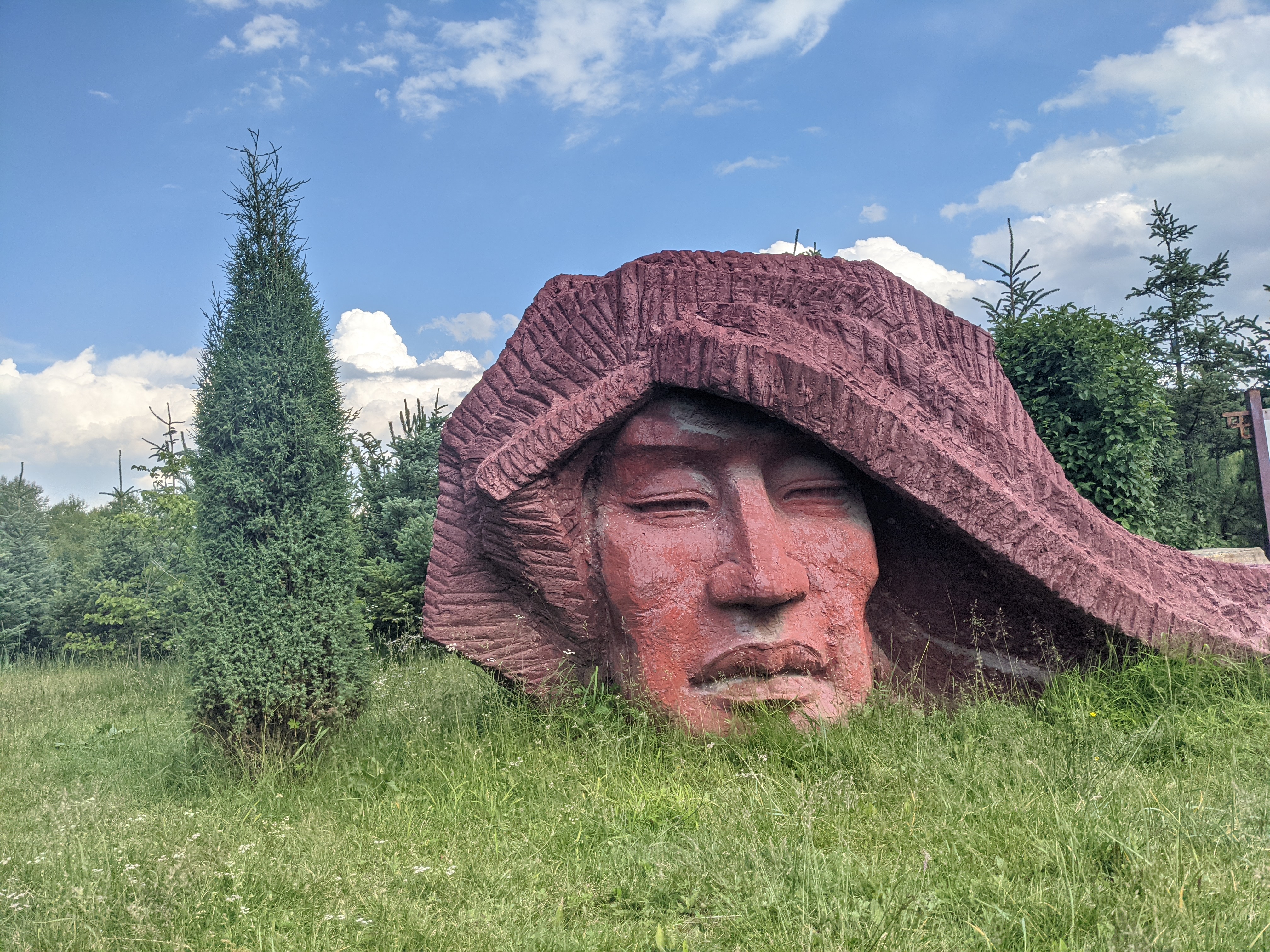As I’ve said many times in past posts: I really like museums. We’ve seen some really cool museums through our travels. The UXO Museum in Laos and the War Remnants Museum in Vietnam opened our eyes about a war we knew surprisingly little about. The Schindler museum in Krakow taught me how the Nazis managed to convince so many people to hate. I particularly like Anthropology museums.

Wherever we go, we end up visiting a museum. On this trip across the Tibetan Plateau, we’ve already visited 2 museums: one about Tibetan Culture and Gansu’s provincial Museum. Here’s some info on both.
Tibetan Buddhism Museum

Located a couple of kilometers away from Kumbum Monestary, this small museum is an ok way to spend an hour or two, as long as you can read Chinese, or are very patient with a translator.

Of course, even if you can’t understand everything, there is always something to see in these types of displays. I actually did use Wechat to translate but sections of text (they have a cool feature where you can translate text from photos!), but even without that life hack, I got a lot out of the visit.
There are several feature videos explaining the history of the area, but they were also in Chinese and quite difficult to follow. Probably the strangest part of the museum was the collection of masks we saw.

Photo courtesy of Richard Clancy 
Photo courtesy of Richard Clancy 
Photo courtesy of Richard Clancy 

One thing I really did like about The Tibetan Culture Museum was the lovely art they had set up outside. These sculptures were beautifully detailed, and of course, there were some magnificent prayer Flags flapping in the wind as well.
Gansu Provincial Museum

After leaving Xining, we head to Gansu Province. We were in Gansu during the October holiday last year, but we didn’t the southern part of the province. We did get to see Danxia and Dunhuang, but we missed the Tibetan Plateau.

Our first real stop in Gansu was Linxia, but after leaving Xining, we had a layover in Lanzhou, so we decided to hit up a museum while we were there.

We went straight from the train station to the gallery, so we had all our bags. I was very happy to see that they have a luggage center set up just outside the museum specifically for people doing exactly what we did!

This stop was quite different from the one near Kumbum Monestary. There was still plenty about Buddhism, which is a major religion in the Tibetan Plateau, but there was also a lot about other history in the area as well. There were several sections to explore: Paleontology, Communist History, Pottery & Buddhist Art.

Our first stop was to see some fossils and learn about the geological history of Gansu. They had a lot of small fossils on display, but sadly only 2 full dinosaur displays out to see. Still, there was plenty to learn as we walked around.
We skipped over the communist section because we had limited time, and went over to the Anthropology section, which was definitely my favourite area.

I was especially impressed by the pottery and the Buddha’s on display. They had pots that are 8000 years old! They did a great job of showing the evolution of this pottery making as well. I spent quite a lot of time studying Greek and Roman pottery, so it was nice to see a whole new style.

7000-8000 years old! 
7000-8000 years old! 
Also up to 8000 years old and had a neat design around it. 
They had some displays about pottery making 
Loved the detail on these! 

The Buddha’s on display could be photographed. They aren’t as grand as the massive golden ones in the Monestaries, but they were very detailed and beautiful nonetheless. I especially liked seeing people so interested in them. So often, people are just staring at their phones in museums. These crowds seemed truly engaged though.
The final area was very similar to the Tibetan Cultural museum we had visited the day before. There was more English, but it was much smaller than the anthropology section.

Stuppas similar to the ones we saw at Kumbum 
Very detailed displays 

Prayer wheels. You walk around them in a clockwise direction and spin them as you go. 


Dave in front of the prayer wheel for contrast.
It took us 1.5 hours to make it through the parts of the museum we saw, so if you’re planning to visit, you should set aside about that much time or more. There is plenty to see!!
Should You Go?

Honestly, I would say that the Buddhist Culture museum was overpriced for what it was. For 60rmb ($12) per guest, there could have been SOME English available. With only 1 or two sentences in English, we really missed out on a lot. After all, I’m always telling my students that translators cannot replace the human mind. They aren’t that smart.

Having said that, if you’re in the area and have an hour to kill, the price isn’t outrageous. You’ll learn a thing or two and see some cool stuff.

As for The Gansu Provincial Museum, I would highly recommend it. Not only is there no entrance fee, there is also a huge range of displays to see, so there’s really something for everyone. If you’re in Lanzhou, try and make the trip down there. You’ll be impressed, I promise!!

We’ve moved into some of the smaller areas of Gansu now! More on Lingxia & Xiahe soon!























